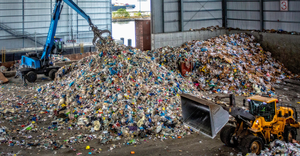California's Old Tires Cross the Ocean and Come Back as Smog
February 16, 2016
TakePart.com
Every year, California drivers generate more than 40 million used tires. Most of them are too beat up to be returned to the road, and until the early 1990s, two-thirds went to landfills, taking up space and costing municipalities money. Others were burned for fuel, and a small portion were recycled. Since then, the state government has spent millions, going to great lengths to keep those tires out of the dump. Besides their utility as fuel, scrap tires can be shredded and turned into artificial turf, or applied as landfill cover to keep other trash from blowing or washing away, but the government prefers that they be recycled, turned into something new and useful. The state has been the catalyst getting the tire recycling businesses up and running, and developing markets for the recycled tire products those businesses make possible.
That went well for a while—the portion of California’s scrap tires winding up in landfills fell from about 65 percent in 1990 to just 26 percent in 2001—until an increase in the prices of Australian coal and Southeast Asian natural rubber threw California’s tire recycling system for a loop. Soon after, Hope started getting calls. The callers were Chinese, or Vietnamese. They were looking for tires. Sometimes they’d call three, four times a week, he says. They had machines to crush the tires down into compact bales and started shipping millions of them to Asia, where they were now a cheaper option than coal for burning in factory furnaces. Suddenly, tire recyclers across the state were sitting idle as the elaborate program the state had kick-started no longer had the material to feed the system. “These balers came along and tossed it all to the wind,” Hope says.
You May Also Like


